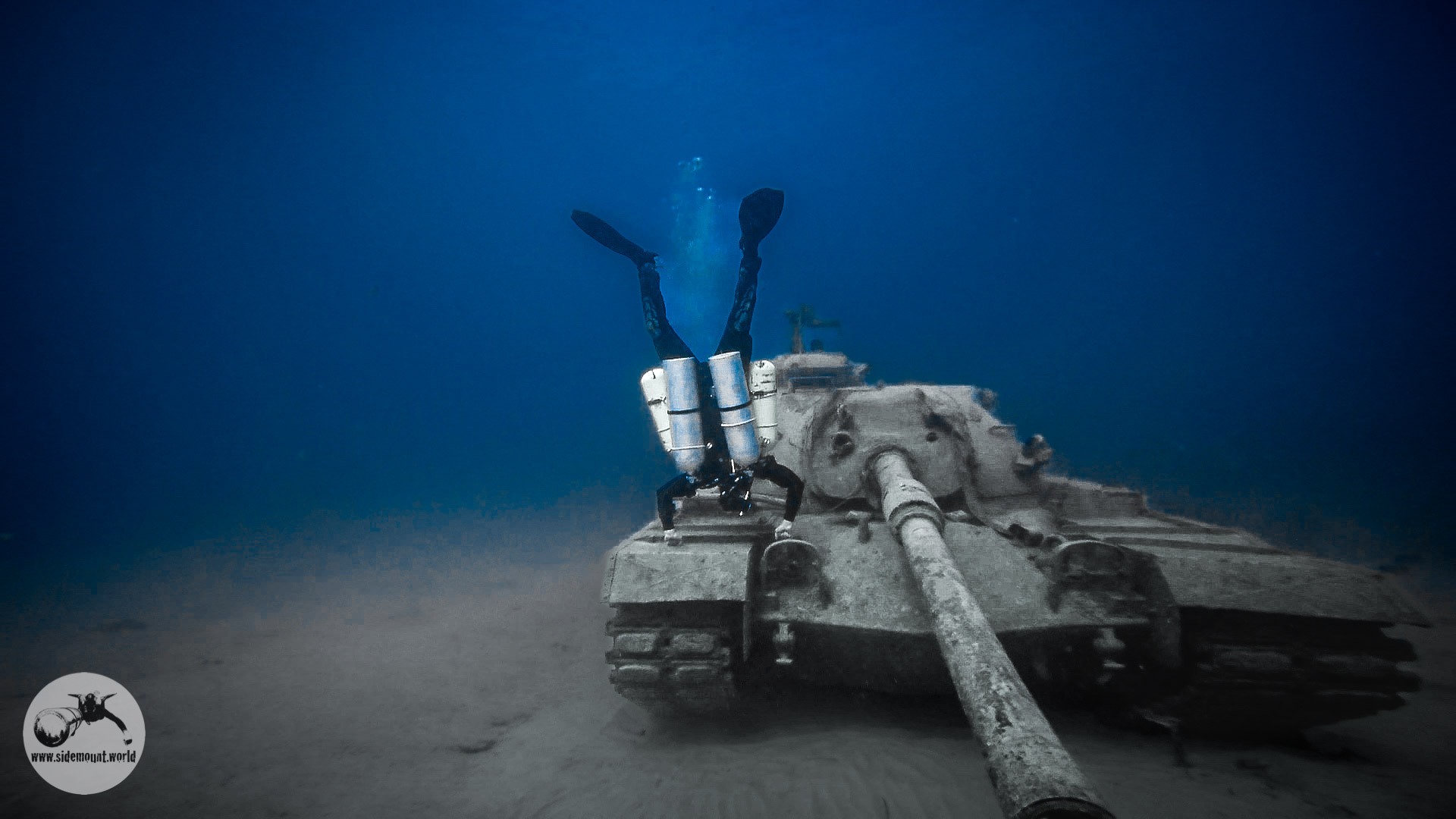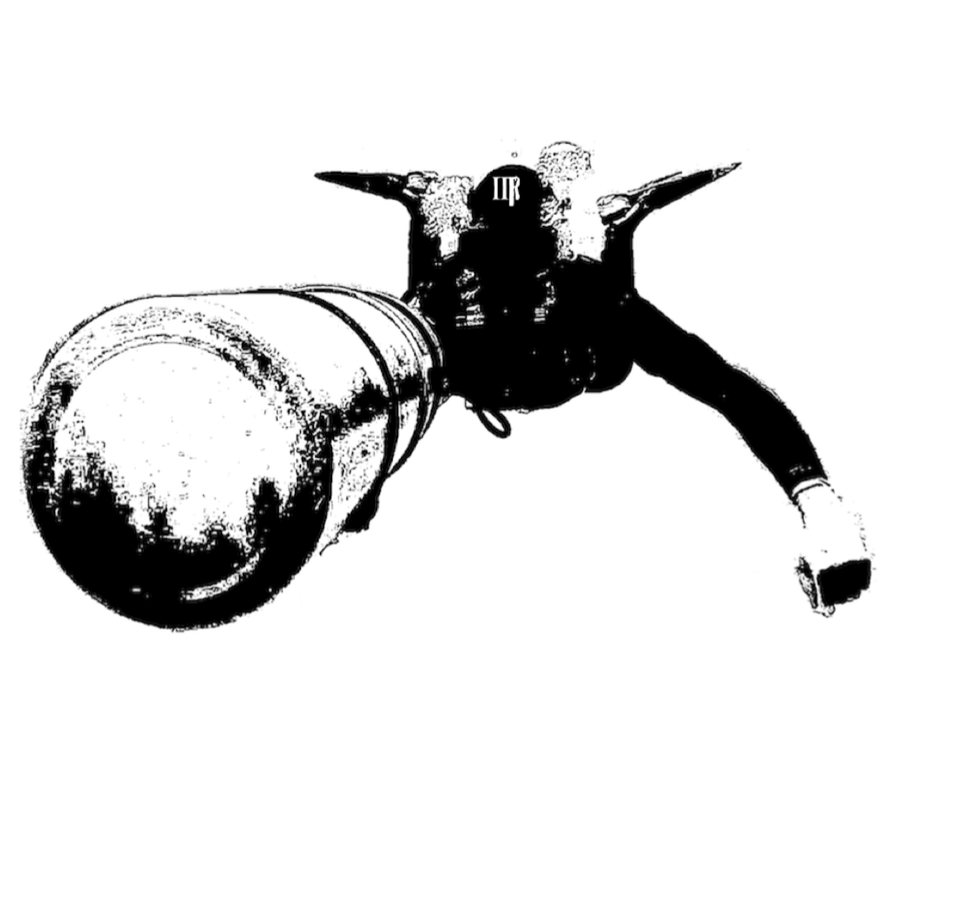What is Sidemount Diving?
Sidemount is a scuba diving equipment configuration which has diving cylinders mounted alongside the diver, below the shoulders and along the hips, instead of on the back of the diver (backmounted configuration). Correctly trained, sidemount diving can be an enlightening experience - most divers will not go back to the backmount configuration because of the freedom and versatility they experience.
It began as a configuration popular with advanced cave divers (UK sump diving) in the 1970s, developed by a man named Woody Jasper, as smaller sections of caves can be penetrated and tanks can be changed with greater ease. In the early 1980s, Wes Skiles and other Florida cave divers started using Sidemount configuration.
The same benefits for operating in confined spaces were also recognised by divers who conducted technical wreck diving penetrations.
This means that up to 2010, only people who were interested in the advanced forms of cave diving or technical wreck dives were being given the opportunity to dive in Sidemount configuration.

When Steve Bogaerts (a UK-born cave pioneer, who lives and cave-dives in Yucatan, Mexico) released the very popular 'Razor' system and began teaching a specific model training program for his rig and at the same time published on www.youtube.com clips of his dives in the caves in Yucatan an increasing amount of divers got interested in this „new“ form of diving.
Over the last years, several technical scuba agencies developed formal sidemount training programs and incorporated sidemount diving configuration as an equipment option within existing technical diving programs.
The advantage of Sidemount Diving is its flexibility - at the same time this is also its disadvantages!
To master the Sidemount equipment and techniques professional training from the beginning is mandatory.
Benefits over Backmount Diving
Flexibility
The sidemount diving approach offers divers significant benefits to the flexibility of their approach. When diving in remote locations, the transportation of diving cylinders, especially by hand, is considerably less physically taxing. Sidemount diving equipment is also considerably lighter, and less bulky than back-mounted alternatives – allowing for easier and cheaper (air transfer) travel.
The flexibility to remove tanks, and propel them in front, allows the diver to pass through very small passages and holes when penetration diving – being limited only by the size of their bodies and exposure protection.
One harness and bladder fits all since it can be customized within a short time. And the same equipment can be used with some modifications for different dives like open water or cave diving.
Accessibility / Safety
The sidemount diver has immediate access to, and observation of, the regulators and tank valves of their cylinders.
This enables immediate problem identification and allows swifter resolution.Increased accessibility to regulators, first-stages and valves improves efficiency and speed of critical cylinder shutdown procedures, allows immediate gas-loss identification and provides the diver with quick access to alternative safety procedures; such as regulator swapping (between cylinders), valve-‘feathering’ to access gas within a cylinder whose regulator is malfunctioned/free-flowing... or even breathing directly from a tank valve.
In addition, stowage of the cylinders next to the diver’s torso, and beneath his armpits, serves to protect vulnerable valves and regulator first-stages from collision, impact and abrasion damage, or accidental shut- down through contact with a ceiling. It also significantly reduces the risk of entanglement behind the diver, where it is least easy to rectify.
Streamlining
Sidemount diving configuration places the cylinders under the diver’s armpits, in line with their body. This decreases water resistance (improving air consumption and reducing fatigue) whilst also allowing the diver to pass through smaller restrictions than would otherwise be possible in back-mounted cylinders.
Comfort
Many divers will testify that sidemount diving configuration offers greater stability and easier-to-attain trim and control in the water. It is also less physically tiring to carry, and get into, sidemount equipment than with traditional back-mounted doubles – especially when operating from a small boat or a rough shore entry. The ability to attach, remove and replace cylinders whilst in the water allows the diver to avoid ever having to carry heavy-weight back-mounted cylinders. Sidemount equipment and harness are custom fit to each individual, accommodating divers of all shapes and sizes. Ideal for divers with any disabilities or smaller persons, as the cylinder(s) are carried separately from your harness to the water and back to the shore.
The Sidemount configuration comes as close as possible to the free diving experience.
Redundancy of gas
Sidemount diving with two cylinders ensures that a truly capable redundant supply of air is maintained in case of a catastrophic failure of the second cylinder supply since the diver is alternating breathing from both cylinders. Independent cylinders, when sidemounted, provide true gas redundancy, whilst offering access (via switching regulators between cylinders or feather breathing ) of all remaining gas.
I strongly recommend you to take training from an experienced Sidemount diving instructor.
It is not the diving agency you should be looking for but the experience level and way of teaching of the instructor you will be training with.
